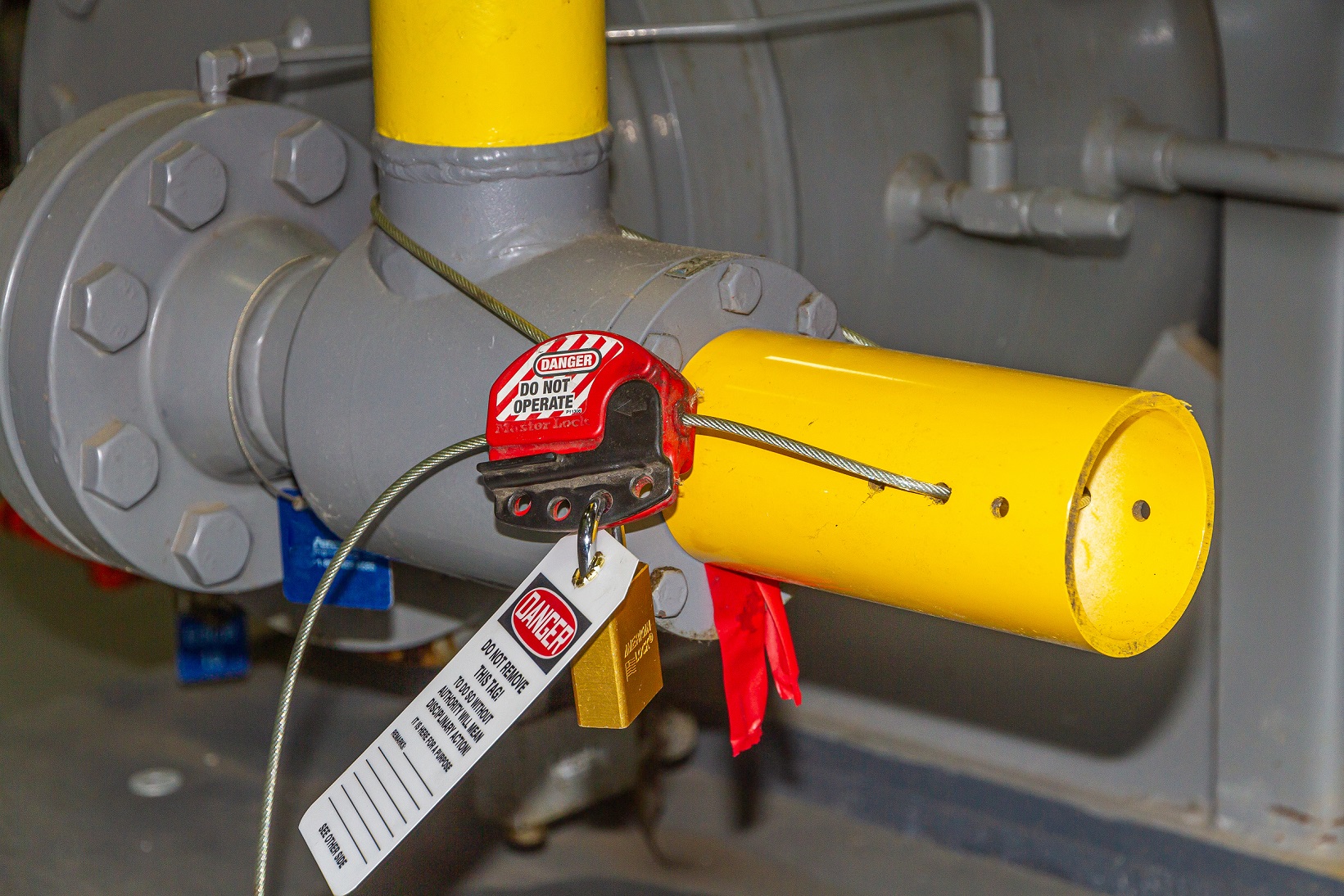During the process of maintaining equipment workers can be exposed to the release of hazardous energy that can result in injury and sometimes death. There are a number of forms of hazardous energy that are commonly found when maintaining equipment: These include Mechanical, Electrical, Chemical, Pneumatic, Hydraulic.
If companies do not have proper Lockout/Tagout safety procedures, then the equipment being maintained can unexpectedly start up or release these forms of hazardous energy, leading to serious injury or possibly death of the employee.
Some examples of hazardous energy release:
- A service technician is working on a HVAC and the electric panel that serves the HVAC hasn’t been properly locked out, the panel has simply been set to OFF. Another technician arrives, turns on the power resulting in the original worker sustaining a serious hand injury.
- A mechanic is maintaining a Waste Truck but has not locked out the hydraulics. A co worker arrives and does not see that the mechanic is maintain the vehicle, starts the truck, resulting in the mechanic sustaining serious crush injuries.
Lockout/Tagout is the process of controlling hazardous energy when maintain equipment to ensure employee safety.
Every company should have a LOTO program. This program should procedures for locking/tagging equipment before maintaining equipment. Employees must be trained, employees must be audited annually to verify that they understand the hazardous energy and lockout/tagout procedures . Each procedure must also be audited annually by an authorized employee for accuracy and any corrective actions must be addressed.
A lockout/tagout procedure should include the following:
- Preparation -The authorized employee (person performing the service/maintenance) must investigate and have complete understanding of all types of hazardous energy.
- Shut Down – Shut down the machine or equipment. Let all employees know that will be affected by the shutdown of the equipment.
- Isolation – Make sure all energy sources are properly isolated.
- Lockout/Tagout – The authorized employee must affix all locks to isolate each hazardous energy source.
- Stored Energy Check – Check for any stored energy. Disconnect, make safe, restrain, or make the energy source non-hazardous.
- Isolation – Verify Step: This is the last step and it is designed to verify that the machine has been shutdown and locked out. Verify that the lockout/tagout procedure has been fully completed. Then the equipment is now in state that it is safe to maintain.
After maintaining the equipment the unlock procedure must be executed to return the equipment to production use. The unlock procedure is normally the reverse of the lock procedure and will involve the removal of all maintenance equipment and tools from the area and the removal of all locks is performed.
Companies must have written LOTO procedures for the service and maintenance of equipment. Employees must be trained, employees must be audited annually to verify that they understand the hazardous energy and lockout/tagout procedures . Each procedure must also be audited annually by an authorized employee for accuracy and any corrective actions must be addressed.
IMEC Technologies provides Safety Management Software to increase worker safety and aid compliance. IMEC’s Safety Management Software will manage inspections and audits, provides hazard identification, incident reporting, management of corrective and preventative actions from generation to closure. IMEC provides lock out tag out software solutions that will allow users to create lockout tagout procedures using an intuitive Mobile App and Manage Lockout Tagout Procedures, also the Review and Execution of those Lockout Tagout Procedures using the Mobile App. Annual Lockout Tagout Procedures audits are conducted using a Mobile App. The Mobile Inspection App allow users to perform inspections and audits, for example the system can be used as a Fire Extinguisher Barcode Inspection Software system to manage monthly fire extinguisher inspections and general fire safety inspections and also to record safety observations and manage corrective actions, anywhere and anytime. The solution can be used as a fire extinguisher barcode inspection software system or life safety inspection system to aid compliance in Higher Education, Healthcare, Industrial and Commercial Organizations. Benefits from a Fire Extinguisher Barcode System include the elimination of paperwork and reducing the burden of compliance with regulations such as NFPA, The Joint Commission. The Incident Reporting App allows users to easily and quickly report incidents, hazards and near-misses, these are then sent to the appropriate people for action and are managed to closure. Web Apps provide features such as, setup, management, scheduling tools, analysis, reporting and dashboards etc with the ability to report incidents to government bodies such as OSHA and RIDDOR. HazMat T&T is a hazardous waste management software solution designed for Environmental Service Companies and companies who generate a large quantity of hazardous waste. The solution tracks hazardous waste from cradle to grave aiding compliance, providing accurate waste inventory, increasing waste handling efficiency, reducing risk and also helps manage waste costs. HazMat T&T Hazardous Waste Management Software can be deployed in a number of deployment scenarios, from Large Hazardous Waste Generators, tracking their hazardous waste at their site to Environmental Service and Waste Management Companies using it track and manage hazardous waste at transfer and disposal sites. For more information visit our website www.imectechnologies.com

